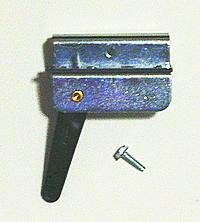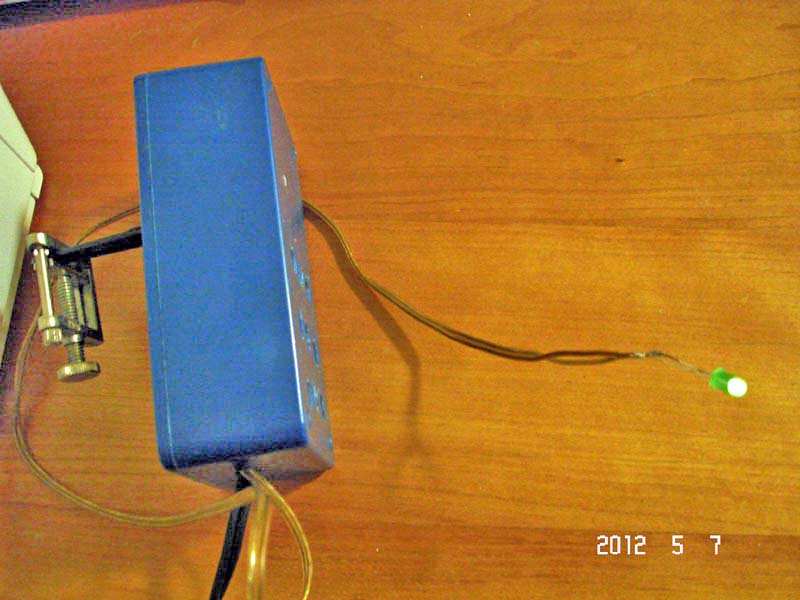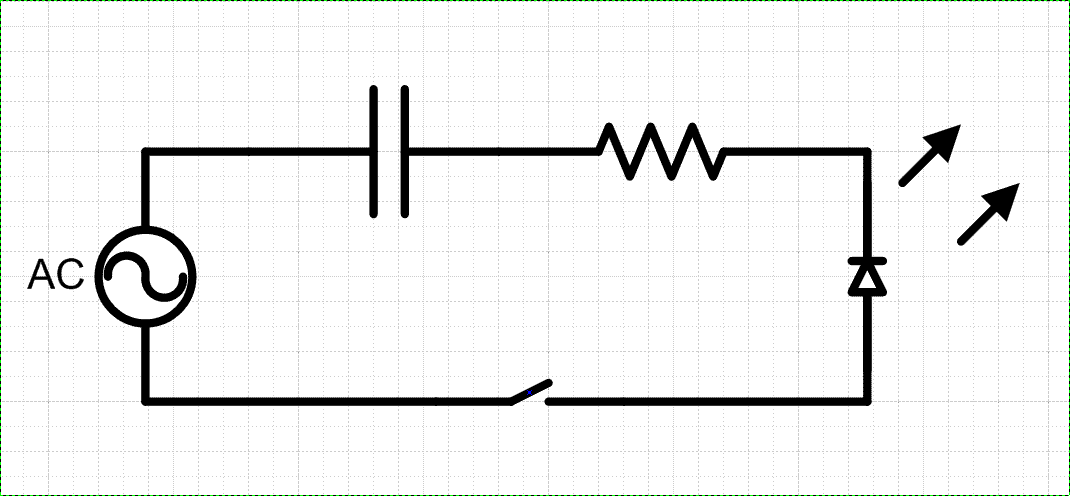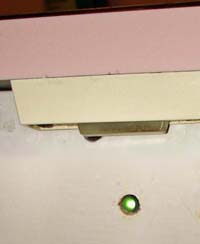HOME ~ @Com ~
On the 'Net since 1994GARAGE DOOR INDICATOR LIGHT
How to make a garage door indicator light
that has no transformer and doesn't draw power in stand-by
From AMAZON:
Genie Screw & Trac Drive
Garage Door Opener Limit
SwitchA God-awful thing happened after my garage-door repairman sprayed lubricant into my 1970's garage door opener's overhead enclosure -- the electronics and motor made flames and smoke and the thing became toast.
Previously, this unit provided a small indicator light (in a kitchen counter) to show when the door is open or closed. The new replacement garage door opener didn't have this feature. Some wireless indicators which the fellow offered to give me didn't work or were just plain ugly.
My old light, (I had long ago replaced its bulb with an LED) is mounted on a kitchen cabinet. It had been powered by a small 6V transformer. A transformer's primary coil draws power even when there is no circuit on its secondary coil to power something. The new unit, described below, has no transformer and draws no power when the LED is off.
I didn't need to buy any parts for this homemade unit except for the switch; I'd had the needed parts cluttering around for thirty years or so.
My newly purchased switch engages the edge of the open garage door. Temperature changes between day and night, Winter and Summer, could cause problems with the alignment between switch and door, so a robust and not so precise switch was called for.
I found a limit switch ($1.37), specifically made for garage doors on Amazon.com. Although this switch was not designed to be employed quite the way I used it, everything worked. I used it to turn on the 110V input side of an R-C circuit when the door is open. Under normal circumstances it's intended to be used downstream, with low voltage power supplied form the garage door opener's electronics. My replacement garage door opener didn't have this feature, as my garage-door repairman explained, to my amazement. In this embodiment, the switch closes and the LED illuminates when the door is all the way open.
I had most of the needed components around the house -- the box, the capacitors and resistors, magnets, and blank circuit board. The U-shaped metal clip came from a car visor clip - the kind that can attach a remote control to your car's flip-down sun visor over the windshield.
These pictures were made during the construction and testing of the thing. I didn't make them specifically with a how-to tutorial in mind, but you'll get the idea. If you have questions, please email me; the address is above on this page.
Garage Door Indicator Light
(In the background - an ancient 12" Laser Video Disk "Misty Beethoven" :)
Link: The Opening of Misty Beethoven Blu-ray, Directed By Radley Metzger (1976)Touch the images to make them a bit larger.
before final assembly. You really only need one capacitor and one resistor. I didn't have a capacitor of the proper capacitance, so I used three in parallel. I also didn't have one resistor of the proper wattage rating, so I used three resistors in series; this also to provides a larger surface area for heat dissipation.
In the final configuration (not shown) I epoxied small 1cm2 "fins" made form beer can aluminum onto the resistors to allow for better heat radiation. Here the LED is in a temporary location for testing. Everything is to be housed in the blue box. (An idle Radio-Shack test circuit board is also in the picture.)
Fully assembled; burn-in test. The clamp at left weighs the limit switch's lever down in order to keep the circuit closed. It ran it this way for three days. The box became warm but not hot, No problem. The black wire (bottom) is the 110 VAC input; the clear output wire powers the green LED.
View from track exterior, garage door side: The metal-clad wooden peg fastened to the top of the door engages the switch. Three magnets (not shown) were epoxied inside the plastic box. This way, no screws are needed and placement is a snap. Two wires are visible. The black one is input 110V household power; the other runs to the remotely located LED. About 4V AC output from the RC circuit drives this LED. The holes are for ventilation.
A very simple schematic diagram.
The values of the capacitor and resistor are not critical. I used three 1000 Ω, 1/4 watt resistors in series. I chose components from what I had around the house, using values which give a bright enough light.
LEDs, being diodes, do illuminate with AC current, illuminating only during half of the cycle in which they are forward biased.
This fellow explains in detail the rationale of the diagram above and explains how to choose the values of the components. It's quite a detailed video on You Tube.
Links:
How to:
Garage Indicator Light
Precognition?
Why do we hate Atheists?
Books about time
An LED is mounted within a kitchen cabinet.
Above it is a door-bell style switch for activating the garage door.
Date: January 9, 2015
Subject: garage door monitor circuit
From: ***
Hi there,
I'm not sure if you still use this email address or not but I wanted to both say thanks for posting your monitoring circuit and also ask you for advice on something I've had in my head for several years but never built as of yet. I have a cased-in solenoid/relay with a mounting bracket and deadbolt. I mounted the deadbolt beside the garage door track and have been using it to 'manually lock' the door when we leave town, etc. I would like to have it set up so that when the door closes, it bolts shut. I've thought about trying to tie into the light circuit on the opener but there must be easier or more robust ways to do this. I welcome any insight or opinions you might have....
Thanks!
Andrew.Mail Catcher Basket
Mail catcher: This thing prevents the mail from spilling onto the floor - 95% of the time. The small magnet is from an electric toothbrush. It holds the thing in its upright position when it's empty. (Enlarge)
God's Debris pdf / txt
Ancestor 4Mb
The Gospel of Judas txt
A Universe With No Beginning or End The Limits of Science & the Science of Limits The KAMA SUTRA Wikipedia book sources
Search for sources given the ISBN number.Really free things, no strings. Link: For Dummies books







